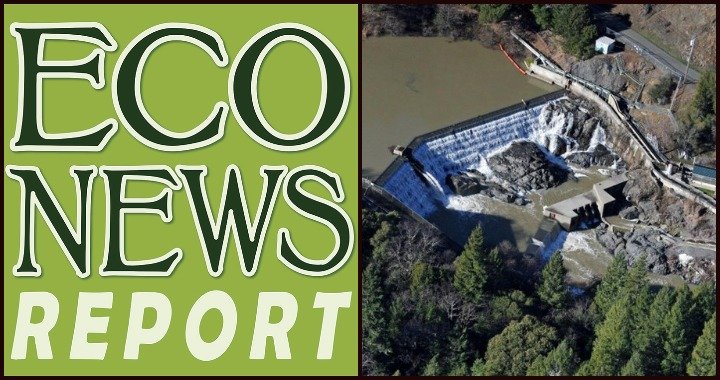
Cape Horn Dam at Van Arsdale Reservoir. Photo: PG&E.
###
There’s a proposal to remove the fish-blocking Scott Dam on the Eel River but looming problems still remain. Cape Horn Dam, just downstream of Scott Dam, technically allows for fish passage through its fish ladder — but that’s only when the ladder is properly functioning and the trouble is that fish often can’t use the ladder because it gets so choked with rocks and debris. So what good is the removal of Scott Dam if salmon still struggle to get past Cape Horn Dam?
Friends of the Eel River is pressing the Federal Energy Regulatory Commission (FERC) to address persistent issues with the fish ladder and – shockingly — FERC admitted that Friends of the Eel River is right! In an important win for salmon, FERC has agreed to consult with the National Marine Fisheries Service as required by the Endangered Species Act.
Find out what this victory means for salmon and dam removal across the West Coast on this week’s EcoNews Report.
AUDIO:
“The EcoNews Report,” April 3, 2021.
REQUIRED READING:
Press release from Friends of the Eel:
Friends of the Eel River (FOER) has claimed an obscure but important win in our fight to reverse the harms Pacific Gas & Electric’s two Potter Valley Project dams continue to cause critically imperiled Eel River salmon and steelhead. Though it took the threat of a lawsuit, the Federal Energy Regulatory Commission (FERC) has conceded it improperly approved an operations plan for new doors on the fish ladder at Cape Horn dam. The Commission failed to take the basic steps required by the Endangered Species Act to ensure listed species won’t be pushed closer to extinction by federal actions.
On March 25, FERC issued a new Order withdrawing the January 28 Order FOER had challeged. Having apparently received a revelation, FERC wrote that “(c)ommission staff has determined that we are required to consult with the National Marine Fisheries Service (NMFS) under section 7(a)(2) of the Endangered Species Act (ESA) to ensure that implementation of the Plan is not likely to ‘jeopardize the continued existence of any endangered species or threatened species or result in the destruction or adverse modification of such species…’”
“FERC’s about-face is a victory for us and a result of our diligent efforts to protect the Eel River’s native fish,” said Alicia Hamann, FOER’s Executive Director. “FERC is notorious for refusing to consult over the impacts on fish and wildlife of the dams it regulates. We’re very happy to see the Commission acknowledge, even in this small instance, that the Endangered Species Act does impose a legal duty on FERC itself to ask the expert agencies how its projects affect listed species.”
“This should help move all parties involved toward a realistic solution to the Eel River dams,” said FOER Conservation Director Scott Greacen. “FERC’s concession means NMFS will take a long overdue look at Cape Horn dam’s fish ladder, the longest and highest in California, through the prism of the Endangered Species Act. If a truly adequate fish ladder is even possible at Cape Horn dam, we have to know what would it cost compared to just removing the dam. The Two Basin Partnership now seeking to relicense the Potter Valley Project has proposed removing Scott dam, but so far refused to even consider removing Cape Horn dam. That will have to change.”
CLICK TO MANAGE